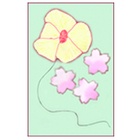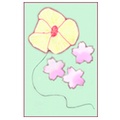The East L.A. Gardeners Association sign is one of four written in Japanese characters on East First Street in Boyle Heights. (The other signs are for Otomisan Restaurant, the Rissho Kosei-kai and Tenrikyo temples.) I looked at the sign everyday on my way to school while I was a student at Roosevelt Senior High School. Seeing Japanese characters in the middle of a 99.99% Hispanic neighborhood made me feel special, as I was one of few in the neighborhood that could read the sign. The sign was recently painted over in white, though the words underneath the paint are still visible.
Prior to and after World War II when there was a high concentration of Japanese immigrants in the United States, one of the easier occupations for Japanese immigrants to enter was gardening. Gardeners at that time were predominantly Japanese throughout Southern California. They formed associations according to locale, strengthening their already tight-knit communities.
As a child growing up in the 1980s and ‘90s in Southern California, the only people I ever saw gardening were Hispanic. In 2007, this demographic hasn’t changed. When the Japanese American National Museum announced their upcoming exhibition on Japanese gardening and landscaping in the United States, I was intrigued to learn more about the history of Japanese gardeners in Southern California.
So I called my mother’s friend, Janice. Janice was born in Japan and raised in the United States. She went to Garfield High School in East Los Angeles where she grew up during the post-WWII era. I hoped she might know something about the East Los Angeles Gardeners Association. When I asked her, she told me that her father was one of the founding members of the association since its inception in 1960 and that her mother also served as president in the early ‘60s.
Wow. One phone call. Lucky number one. I wish it worked out like this all the time.
When Janice’s mother was president of the association, she organized mochitsuki events, family picnics, Bingo games, Father’s Day celebrations and conventions where other associations that were part of the Southern California Gardeners’ Federation met in Las Vegas to form relationships and discuss gardening matters. Janice’s father served as treasurer for the Federation for a time. He also translated between Japanese and English for the association’s monthly newsletter.
These associations were such tight communities that the gardeners organized what they called “co-ops”, where if a member was ill and could not work, a fellow member would take over his gardening route without pay to keep the customers. Janice’s father’s route was in Downey but would drive to Diamond Bar and West Covina among other cities to support fellow members’ routes when they could not work.
The city purchased the East L.A. Gardeners Association space in the summer of 2004, along with other businesses on the corner of 1st and Soto streets, when the Metro Gold Line Eastside Extension project began. “Do they still meet?” I asked. They sure do, Janice explained. The East L.A. Gardeners Association membership, though most are retired and many have passed away, still meet at Paul’s Kitchen, a Chinese restaurant in Monterey Park. The association, Janice explained to me, is more like a social club where retired gardeners and their families organize reunions and family-oriented functions. Though the association is predominantly Japanese, some of the members are Hispanic.
As I learn about the history of my neighborhood, I see that much has changed in just fifty years. The current overpopulation in Boyle Heights has caused former single-family homes to be converted into four homes. Roosevelt Senior High School is so overpopulated that the school is open year-round, operating on a three-track schedule. Most Boyle Heights residents’ first language is Spanish and most businesses in the neighborhood serve the Hispanic community.
There are still remnants of Japanese gardening that remain in Boyle Heights. The several Buddhist temples, few houses and apartment complexes whose caretakers and tenants are Japanese, make sure the gardening reflects their cultural heritage. However, new condominium projects are slowly underway making gardening less visible and lucrative. Very few homes and apartment buildings maintain their yards. The few that do seem to hold on strongly to an old Boyle Heights, undeterred by the wave of changes that the neighborhood constantly undergoes. The East L.A. Gardeners Association sign, too, holds on to its rock solid presence on First Street luring curious individuals to seek why the hidden sign is not so hidden.
*****
Related events – Landscaping America: Beyond the Japanese Garden, exhibition at the Japanese American National Museum
*****
© 2007 Victoria Kraus




